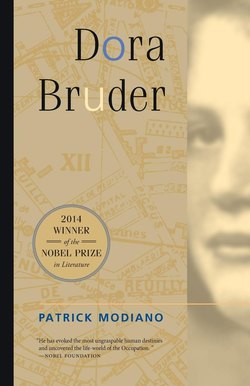Читать книгу Dora Bruder - Patrick Modiano - Страница 8
На сайте Литреса книга снята с продажи.
Оглавление.................
EIGHT YEARS AGO, IN AN OLD COPY OF PARIS-SOIR DATED 31 December 1941, a heading on page 3 caught my eye: “From Day to Day.”1 Below this, I read:
PARIS
Missing, a young girl, Dora Bruder, age 15, height 1 m 55, oval-shaped face, gray-brown eyes, gray sports jacket, maroon pullover, navy blue skirt and hat, brown gym shoes. Address all information to M. and Mme Bruder, 41 Boulevard Ornano, Paris.
I had long been familiar with that area of the Boulevard Ornano. As a child, I would accompany my mother to the Saint-Ouen flea markets. We would get off the bus either at the Porte de Clignancourt or, occasionally, outside the 18th arrondissement town hall. It was always a Saturday or Sunday afternoon.
In winter, on the tree-shaded sidewalk outside Clignancourt barracks, the fat photographer with round spectacles and a lumpy nose would set up his tripod camera among the stream of passers-by, offering “souvenir photos.” In summer, he stationed himself on the boardwalk at Deauville, outside the Bar du Soleil. There, he found plenty of customers. But at the Porte de Clignancourt, the passers-by showed little inclination to be photographed. His overcoat was shabby and he had a hole in one shoe.
I remember the Boulevard Ornano and the Boulevard Barbès, deserted, one sunny afternoon in May 1958. There were groups of riot police at each crossroads, because of the situation in Algeria.
I was in this neighborhood in the winter of 1965. I had a girlfriend who lived in the Rue Championnet. Ornano 49–20.
Already, by that time, the Sunday stream of passers-by-outside the barracks must have swept away the fat photographer, but I never went back to check. What had they been used for, those barracks?2 I had been told that they housed colonial troops.
January 1965. Dusk came around six o’clock to the crossroads of the Boulevard Ornano and the Rue Championnet. I merged into that twilight, into those streets, I was nonexistent.
The last café at the top of the Boulevard Ornano, on the right, was called the Verse Toujours.3 There was another, on the left, at the corner of the Boulevard Ney, with a jukebox. The Ornano-Championnet crossroads had a pharmacy and two cafés, the older of which was on the corner of the Rue Duhesme.
The time I’ve spent, waiting in those cafés . . . First thing in the morning, when it was still dark. Early in the evening, as night fell. Later on, at closing time . . .
On Sunday evening, an old black sports car—a Jaguar, I think—was parked outside the nursery school on the Rue Championnet. It had a plaque at the rear: Disabled Ex-Serviceman. The presence of such a car in this neighborhood surprised me. I tried to imagine what its owner might look like.
After nine o’clock at night, the boulevard is deserted. I can still see lights at the mouth of Simplon métro station and, almost opposite, in the foyer of the Cinéma Ornano 43. I’ve never really noticed the building beside the cinema, number 41, even though I’ve been passing it for months, for years. From 1965 to 1968. Address all information to M. and Mme Bruder, 41 Boulevard Ornano, Paris.
1. “D’hier à aujord’hui.”
2. During the Occupation of Paris, Clignancourt barracks housed French volunteers in the Waffen SS. See David Pryce-Jones, Parus ub the Third Reich, Collins, 1981.
3. “Keep pouring, nonstop.”
